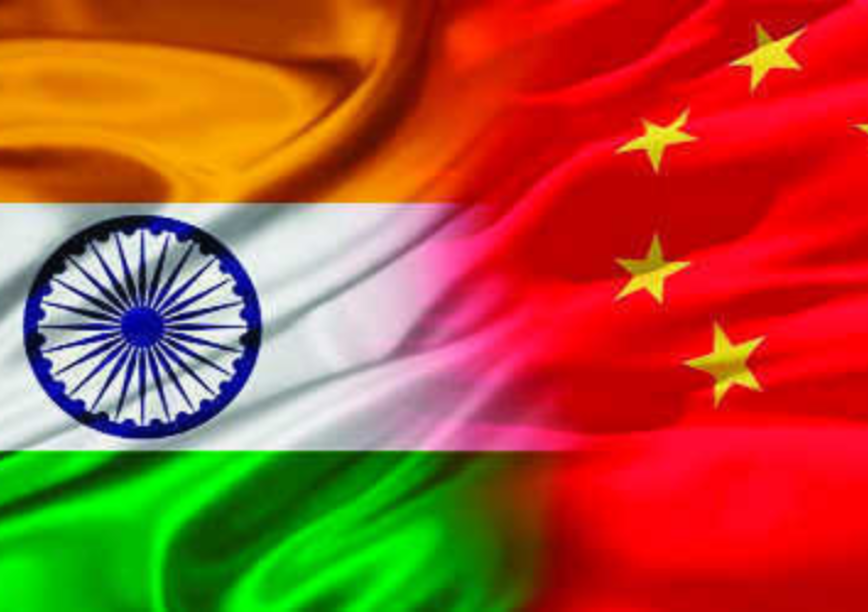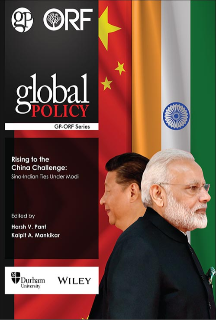
Source Image: Courtesy Tribune India
As India celebrates the 76th year of its independence, there is no denying that it has emerged as one of the “most important poles in this multipolar world order”. India’s growing importance in the world order is also an outcome of how it has managed and interacted with its neighbourhood in the past seven decades. Throughout these years, the Indian subcontinent has provided India with status and a trial ground to display its strong material and military capabilities. Further, as the countdown for Amrit Kaal begins, the importance of the neighbourhood is only growing—India is shedding itself from the burdens of strategic preoccupation with Pakistan; undertaking the role of leadership; and confronting new challenges by promoting robust engagement, economic integration, partnerships, and connectivity in the region.
Circumventing the Pakistani trap
In the last Foreign Policy Survey of India’s youth conducted in 2022, nearly 58 percent of the people considered India’s isolationist policy towards Pakistan and its refusal to engage with Islamabad as effective. Owing to the burden of history and the deeply embedded perceptions that influence how both countries view each other, any attempts by New Delhi to expand its footprint in its neighbourhood are affected by the presence of Pakistan. From the immediate post-Independence period to as recently as 2015-16, Pakistan was the lens through which India viewed the success/failure of its neighbourhood policy.
India’s growing importance in the world order is also an outcome of how it has managed and interacted with its neighbourhood in the past seven decades.
In 2014, the swearing-in ceremony of Prime Minister Narendra Modi saw the participation of all members of the South Asian Association for Regional Cooperation (SAARC), including Pakistan. This act was viewed as a symbolic shift in the importance the National Democratic Alliance (NDA) government would place on India’s neighbourhood. Moving forward, India participated in the SAARC Summit the same year, held in Kathmandu, and committed to reinvigorating the group. While there were some disagreements during the signing of the Kathmandu Declaration, there was still consensus on utilising the SAARC as a regional platform to better integrate South Asian countries. However, persistent terror attacks and nuisance in Kashmir eroded this little trust and hope for dealing with Pakistan, within India and in the neighbourhood.
Fast forward to 2023, neither the Indian public nor the Indian state has the appetite to tolerate any of Pakistan’s misadventures. Similarly, Pakistan—once used to push back and balance against India by some South Asian countries—is now fading in its strategic relevance in the neighbourhood, with its failing economy, polity, and security. Today, the SAARC has all but disappeared from public memory, with India’s ‘Neighbourhood First Policy’ now explained better by the Bay of Bengal Initiative for Multi-Sectoral Engagement (BIMSTEC) and robust bilateral relationships with the smaller countries in the neighbourhood. This shift towards alternative regional platforms also underscores India’s attempts to push the Pakistan factor out of the country’s vision for the neighbourhood.
From the immediate post-Independence period to as recently as 2015-16, Pakistan was the lens through which India viewed the success/failure of its neighbourhood policy.
A call for robust engagement
Even as India’s strategic preoccupation with Pakistan fades, New Delhi is pushing against Chinese presence and influence in the neighbourhood. The “Neighbourhood First” policy thus attempts to prioritise India’s neighbours and promote robust political, economic, and diplomatic engagements.
This prioritisation of the region can be illustrated by Prime Minister Modi’s record number of visits to Nepal, Bangladesh, and Sri Lanka. As the newly appointed PM, Modi paid his first state visit to Bhutan, followed by Nepal—the first visit by an Indian Prime Minister in 17 years. These visits were followed by active diplomacy with Bangladesh, Sri Lanka, and Maldives. During these visits and interactions, India has made more commitments to increase connectivity, economic integration, and people-to-people ties. New Delhi also inked a Comprehensive Action Plan for Defence with Maldives in 2016. India has also focused on sub-regional initiatives to enhance connectivity in the region. New Delhi signed the BBIN-Motor Vehicle Agreement (MVA) with Bangladesh, Bhutan, and Nepal in 2015 to facilitate the cross-border transfer of vehicles containing people and cargo between the four countries. The need for such cooperation and connectivity has only increased with investors and countries de-risking from China, and moving towards India.
Even as India’s strategic preoccupation with Pakistan fades, New Delhi is pushing against Chinese presence and influence in the neighburhood.
India has also prioritised development partnerships with its neighbours through grants, loans, lines of credit, technical consultancy, disaster relief, scholarships, capacity-building programmes, etc. In the previous year alone, India has allocated over INR 5,850 crores for technical and economic cooperation—out of which a major chunk is allocated to the neighbourhood. For instance, in the Maldives, India has initiated over 54 High Impact Community Development Projects in the last five years alone. With Bhutan, India has decided to step up its support for its 13th five-year plan—indicating that its assistance will supersede the support of the last two plans, which is INR 4,500 crore. India has also emerged as a first responder in the region. Its assistance during maritime disasters, and also assistance to Sri Lanka during its economic crisis, underscores its increasing role as a “development partner” and “first responder”.
New compulsions and new partnerships
In addition to ushering in a new era of economic growth, integration, and connectivity, India@76 is also attempting to get rid of its outdated reservations. In recent years, it has become increasingly cooperative with other powers in the subcontinent, especially its QUAD partners—the United States (US), Japan, and Australia. The intention is threefold: Push back against Chinese investments and influence in South Asia by offering genuine alternatives; take the lead in the subcontinent to establish itself as an undisputed leader in the region and beyond—this will help India find a place in the global high table; third, promote its economic growth and trade by robustly engaging with its neighbours.
This strategy of India’s is shaping a new regional order that is beneficial for itself, the QUAD, and the South Asian countries. Diplomatically, the QUAD partners have joined India in subtly nudging these South Asian countries to promote values-based order in the Indo-Pacific. Visits from Washington and Tokyo have drastically increased to Dhaka and Colombo, and both Canberra and DC have now opened up their diplomatic missions in the Maldives. Infrastructure-wise, Japan is increasing investments in a crisis-hit Sri Lanka and economically-booming Bangladesh. India has also reportedly assisted the US in succeeding with the Millennium Challenge Corporation’s (MCC) ratification in Nepal—making it the only MCC investment in South Asia. Even in crisis times, as seen in the Sri Lankan crisis, this partnership has seen cooperation and coordination to stabilise the situation. Finally, India has also not objected to these countries’ efforts to promote defence and security cooperation in the region. The US finalised a defence and security agreement with the Maldives in 2020 and invited Nepal to join the State Partnership programme. Japan also has increased its maritime security and counterterrorism cooperation with Bangladesh.
This strategy of India’s is shaping a new regional order that is beneficial for itself, the QUAD, and the South Asian countries.
The extent and nature of India facilitating such cooperation in the region was inconceivable a few years ago. This change underscores India’s increasing adaptability to the evolving world order. There is trust and reliability with its QUAD partners, despite not having a formal alliance with any of them. Most importantly, there is more energy from India to usher in a new era of cooperation and leadership in the region. As India celebrates the 76th year of its independence, it will continue to robustly and cautiously engage with its neighbours, confront new challenges in the region, and promote new partnerships.
Aditya Gowdara Shivamurthy is a Junior Fellow with the Strategic Studies Programme at the Observer Research Foundation.
Shivam Shekhawat is a Research Assistant with the Strategic Studies Programme at the Observer Research Foundation.
The views expressed above belong to the author(s). ORF research and analyses now available on Telegram! Click here to access our curated content — blogs, longforms and interviews.




 PREV
PREV



